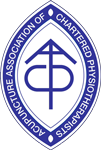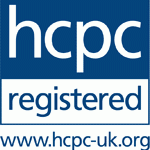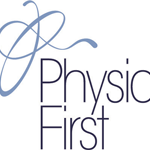SHOULDER IMPINGEMENT SYNDROME
INTRODUCTION
Welcome to Hart Physio’s patient resource about Impingement Syndrome.
The shoulder is a very complex piece of your body. Its detailed design gives the shoulder joint great range of motion, but not much stability. As long as all the parts are in good working order, the shoulder can move freely and painlessly.
Many people refer to any pain in the shoulder as bursitis. The term bursitis really only means that the part of the shoulder called the bursa is inflamed. Tendonitis is when a tendon gets inflamed. This can be another source of pain in the shoulder. Many different problems can cause inflammation of the bursa or tendons. Impingement syndrome is one of those problems. Impingement syndrome occurs when the rotator cuff tendons rub against the roof of the shoulder, the acromion.
This guide will help you understand:
- what happens in your shoulder when you have impingement syndrome
- what tests your Physiotherapist will use to diagnose the condition
- how you can relieve your symptoms.
ANATOMY
The shoulder is made up of three bones: the scapula (shoulder blade), the humerus (upper arm bone), and the clavicle (collarbone).
Shoulder Bones
The rotator cuff connects the humerus to the scapula. The rotator cuff is formed by the tendons of four muscles: the supraspinatus, infraspinatus, teres minor, and subscapularis.
Rotator Cuff
Tendons attach muscles to bones. The rotator cuff helps raise and rotate the arm. As the arm is raised, the rotator cuff also keeps the humerus tightly in the socket of the scapula, the glenoid. The upper part of the scapula that makes up the roof of the shoulder is called the acromion.
A bursa is located between the acromion and the rotator cuff tendons. A bursa is a lubricated sac of tissue that reduces the friction between two moving parts. Bursae are located all over the body where tissues would otherwise rub against each other. In the case of the shoulder, the bursa protects the acromion and the rotator cuff from grinding against each other.
|
|
What are the causes of shoulder impingement?
Usually, there is enough room between the acromion and the rotator cuff so that the tendons slide easily underneath the acromion as the arm is raised. However, when a pathology develops there is rubbing or pinching on the tendons and the bursa. This rubbing or pinching action is called impingement. The chances of your shoulder impinging are increased by:
- poor posture and an accentuated curve in the upper back
- repetitive activities with the arm in the overhead position
- throwing activities
- abnormalities in your anatomy such as bone spurs, which can be associated with wear and tear of the joint
Symptoms of shoulder impingement
Impingement syndrome causes generalized shoulder aches in the condition’s early stages. In addition you may notice:
- difficulty sleeping on the affected shoulder
- pain with activities behind your back
- a growing stiffness in the shoulder
- a weakness with use of the arm
DIAGNOSIS
A Physiotherapist will be able to discern if you have symptoms of shoulder impingement based on your medical history. The diagnosis of bursitis or tendonitis caused by impingement is usually made on the basis of your medical history and physical examination. At this stage the Physiotherapist will help determine if there is any neck involvement which may be a contributory factor to your pain. Some patients may be referred to a doctor for further diagnosis. Once your examination is complete, the Physiotherapists at Hart Physio have treatment options that will help speed up your recovery, so that you can more quickly return to your active lifestyle.
OUR TREATMENT
Conservative Rehabilitation
The prime role of the Physiotherapist is to assist in the non-surgical management of your shoulder. Pain and inflammation can be eased with the use of ice and anti-inflammatory medicine as appropriate. Anti-inflammatory medications such as ibuprofen. Treatment may also include:
- a specific programme of strengthening and stretching for the shoulder and surrounding tendons, we will ensure you have a clear understanding of the exercises and as necessary provide annotated sheets for reference
- hands on treatment for restoration of mobility. Where there is capsular tightness your Physiotherapist will be able to carefully ease the tension to allow tendons the space to move more smoothly.
- correction of biomechanics to optimize alignment
- workstation advice and guidance
If following a period of rehabilitation your symptoms are not resolving, we will refer you to your GP or an orthopaedic consultant. At this point you may be required to have investigations that can include an Xray or a MRI. At this stage they are looking for any structural problems that may be contributing to the continuation of your pain. You may also be offered an injection that offers further clarity to the origin of the pain and may be undertaken before surgery is considered.
There are a number of surgical options which will be considered depending on your specific pathology. The most common procedures are:
Subacromial Decompression– whereby the space between the acromion and the rotator cuff tendons is increased taking pressure off the tissues under the acromion. This is most commonly completed through an arthroscopic route which is minimally invasive. If there is significant tendon injury then a repair can be undertaken.
Resection Arthroplasty– which addresses the acromio-clavicular joint which may show signs of joint degeneration. This procedure removes a small piece of the clavicle which is replaced by scar tissue.
POST-SURGICAL REHABILITATION
Rehabilitation after shoulder surgery can be a slow process. Although the time required for recovery is different for each patient, as a general rule, patients with impingement syndrome usually need to attend Physiotherapy sessions for several weeks, and should expect full recovery to take several months. Getting the shoulder moving as soon as possible is important. However, this must be balanced with the need to protect the healing muscles and tissues.
At about six weeks you start doing more active strengthening. These exercises focus on improving the strength and control of the rotator cuff muscles and the muscles around the shoulder blade. Our Physiotherapist will help you retrain these muscles to keep the ball of the humerus in the socket. This helps your shoulder move smoothly during all your activities. Some of the exercises you do are designed get your shoulder working in ways that are similar to your work tasks and sport activities. Our Physiotherapist will help you find ways to do your tasks that don’t put too much stress on your shoulder. The key in the long term is prevention and the aim is that you are confident in looking after your shoulder into the future.






